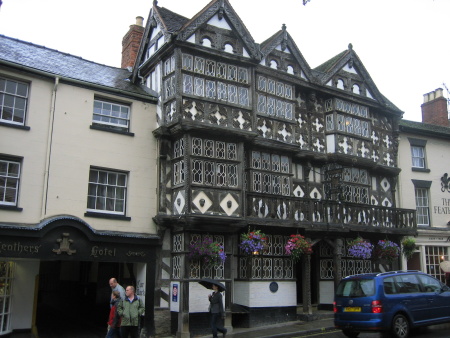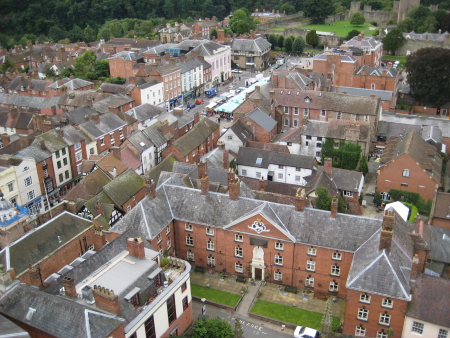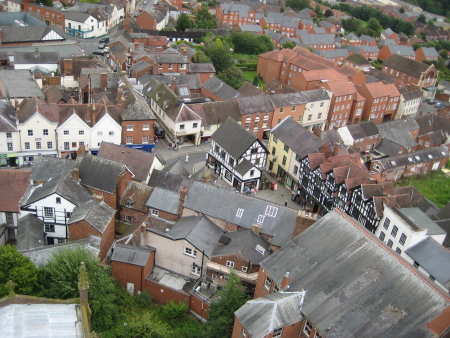Ludlow – a little history…and pictures
So, now you know that Ludlow exists and that it has some beautiful places to stay and eat. But what about the town itself? Well, while we were there, we took a walking tour with a local architectural and historical society and there was much to be learned. Ludlow is a border town. It’s in a region called the Marches which essentially means a border. This would be the Welsh border and, when the UK absorbed Wales in the 15th Century, an administrative body call the Council of the Marches was set up and Ludlow was the administrative centre. Originally just a castle, Ludlow was suddenly something of a capital now and a town sprang up around it. It is also a market town, meaning people from the country sides came in weekly to buy and sell goods in a central location.
In the 17th Century, the Council of the Marches was abolished, but Ludlow survived by being a fashionable market town and, since it took 27 hours to get to London from Ludlow at the time, it retained an air of cosmopolitanism. However, with the arrival of the train in the 19th century, which connected the far-flung (relatively) reaches of Britain, Ludlow began a quick and steady decline. If it helps, you can now get from Ludlow to London in 3 hours.
Now, the decline of any place is not a good thing, but in this case, there’s a silver lining. While much of old England got torn down in the mid-20th century and was replaced by some horrible modernist concrete architecture (some of it by choice, some because the Germans bombed the shit out of many English cities), Ludlow laid forgotten. And this meant that a slice of English architectural history was perserved so, when the preservation movement sprung up, there was a town with 400 examples of English Architecture. Half-timbered buildings are all over the place and a gigantic cathedral towers over it all, a sign of the former power and money that used to flow into this small market town. Let’s take a look.

The Feather’s Hotel is a classic, and Ludlow’s most elegant example of the half-timbered building. A timbered frame is erected and the gaps in the timber are filled with things like mud or, later on, concrete. Typically, the white parts you see were likely painted with some color and not white. The wood is oak which, when cut is still quite soft, but then hardens quickly and perserves very nicely.

Ludlow from above. The green and white striped tents are the market, which still is around today, 3-5 days a week. And people still come into to town to do their weekly shopping. Note the edge of the castle in the background (much more on that later).

One of the best grouping of old buildings. Note the large large bell tower of the church behind it.

Another view of Ludlow from the bell tower and some more examples of half-timbered buildings.
Next, I’ll show more of the church, the river Teme and the castle.

October 22nd, 2008 at 5:38 pm
We wish Ludlow had been closer to London to allow us to have done a day trip. Looks very nice. And glad that you enjoyed your time there, and together.